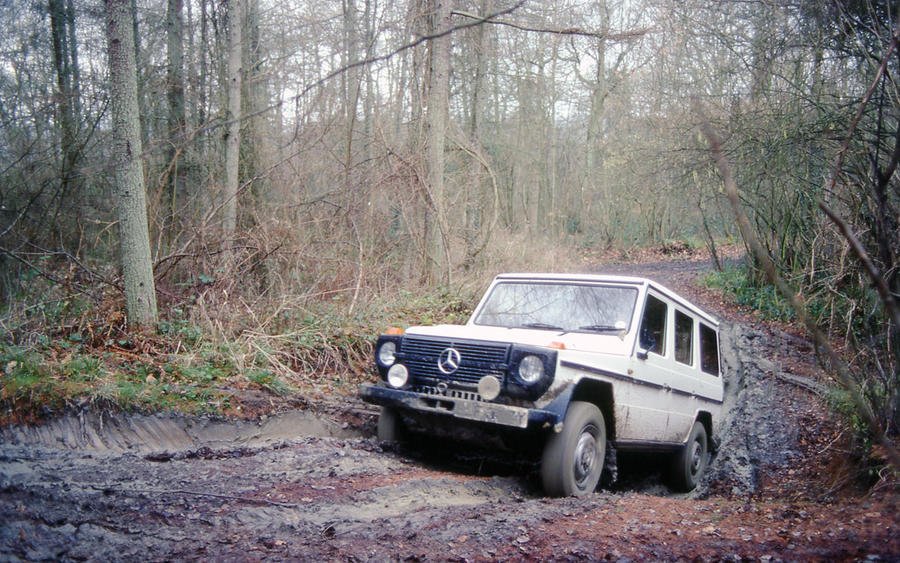If you have a wad of cash to splurge on a capable and luxurious off-roader but don't fancy following the herds into a new Land Rover Defender, why not consider a used example of arguably its closest rival?
It has visibly evolved even less during its 41-year life cycle than the original Defender did, but regardless of that, the Mercedes-Benz Geländewagen (meaning terrain vehicle, but you'll know it as the G-Wagen or G-Class) is an overwhelmingly capable off-roader that manages to marry refinement with ruggedness in a way its British contemporary never really could.
Here we'll ignore the post-2018 and performance models, because they're different beasts entirely, and turn our attention to the W460 (1979-1992), the W461 (1992-present) and regular versions of the W463 – the evolved W460 introduced in 1990 that turned the G-Wagen into a luxury SUV.
One of the best things about the G-Wagen is how little it has changed. Even the Volkswagen Beetle received more nips and tucks than this two-box trail weapon, meaning you could dress up a 1990 model and convince unwitting friends and colleagues that you've just dropped upwards of £100,000 on a snarling new AMG.
The vast majority of surviving early W460 cars have, however, gone untouched and now represent what the G-Wagen used to be: a stylish yet agricultural family hauler that you would never be afraid to get mucky.
That's not to say these are budget options, mind you. Even a low-spec, short-wheelbase 1992 model is listed at a whopping £16,995, while a low-mileage, full-sized 1987 car is asking just a hair shy of £20,000 for its passable impression of a new G63.
W461 cars are probably safer bets if you're keen to avoid corrosion and costly repairs. However, they rather lend themselves to questionable modification, so there are plenty of gold-wrapped, jacked-up and window-tinted cars in the classifieds that would be more at home in Kensington than the Kalahari.
Depending on your budget, you could seek a left-hand-drive W461 or W463 from overseas. (You might have to do this, because the G-Wagen was withdrawn from the UK in 1995 and wasn't reintroduced until 2010.)
German, French and Dutch classified websites, for example, serve up much more comprehensive and varied offerings when it comes to the G-Wagen, including ex-military models, camper conversions and exclusive limited editions.
During its long life, the G-Wagen could be ordered with a plethora of petrol and diesel engines, ranging from the W460's 2.0-litre four-pot petrol unit right up to the storming 6.3-litre V12 available in the W463.
Among the most coveted options are the 3.0-litre diesel straight six, which won't blow your hair off but will live forever with the right maintenance, and the petrol V8 offered later, which turned the G-Wagen into one of the least likely performance cars around.
How to get one in your garage
An expert's view
John Dring, G-Wagen Owners Association: "All things considered, old G-Wagens never die and are simply worth too much to be allowed to do so. They're much rarer than a Ferrari and more practical (but with similar fuel economy). You might come across a barn find for a little under £10k, or opt for a nuts-and-bolts restoration, possibly with an OM606 diesel engine addition, costing you £30k-plus. No one ever said quality or style would come cheap. What would you rather have: a new Mini or a mint G-Wagen?"
Buyer beware...
■ Engine: Don't think the G-Wagen is in any way fast or frugal. Instead, take pleasure in the reliability of its laid-back motors. That said, propshaft failure is a known fault, signalled by a pronounced shudder under load. Gasket, hose and, more seriously, turbo leaks are also risks but not fatal. Check service records and that the oil was changed every 6000 miles or so. It's also worth flushing the fuel tank and fuel hoses, because rust can build up inside them.
■ Bodywork: W463s from the 1990s are particularly prone to rust, mainly around the rear lights, windows and bumpers. If all looks clean, dig deeper to make sure corrosion hasn't just been filled and painted. Mechanical components and chassis elements may have sustained damage during off-road expeditions. Later cars can suffer from leaky and malfunctioning sunroofs as a result of blocked drain holes, and corrosion here can cost thousands to repair.
■ Suspension: Be wary of lift kits and massive tyres, because they imply a life hard lived. On the other hand, they could be a boon if you plan to go off the beaten track. Check strut mounts, because they're a known weak spot that could pose a nasty, ahem, shock come MOT time.
■ Interior: Higher-mileage cars might show their age, but seat wear can be fixed with retrimming or covers. More serious is a sagging headliner; replacement requires removal of the entire interior. Roll all the windows up and down, too, because the mechanisms can seize. And don't be surprised if the cupholder brackets have snapped on later cars.
Also worth knowing
The G-Wagen has always been a firm military favourite. MoDsurplus.co.uk has a healthy selection listed, including a 2004 armoured LWB, a collection of no-frills Wolf 250GDs in full field camouflage and a rare box conversion example that would make a fantastic adventure wagon. These can be good value, due to high mileages and sparse kit, but they're often left-hand drive.
Notícias Relacionadas

